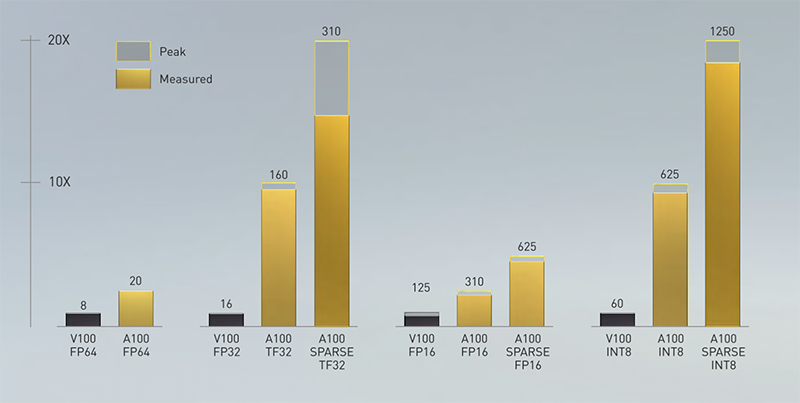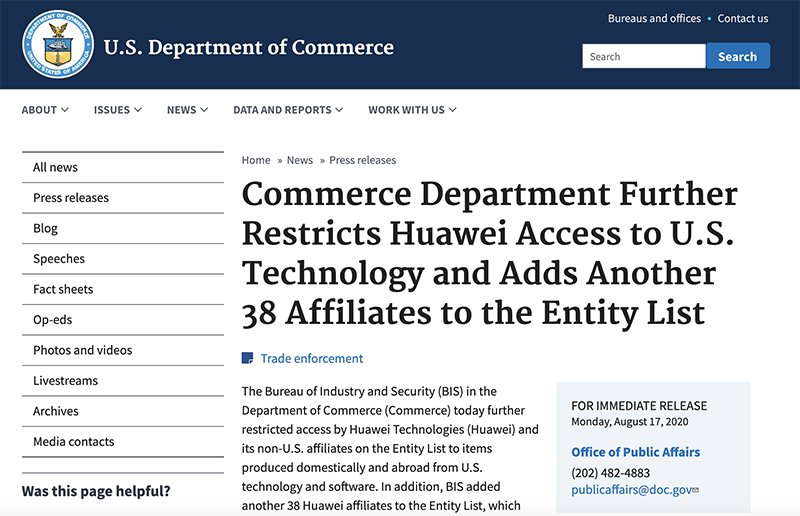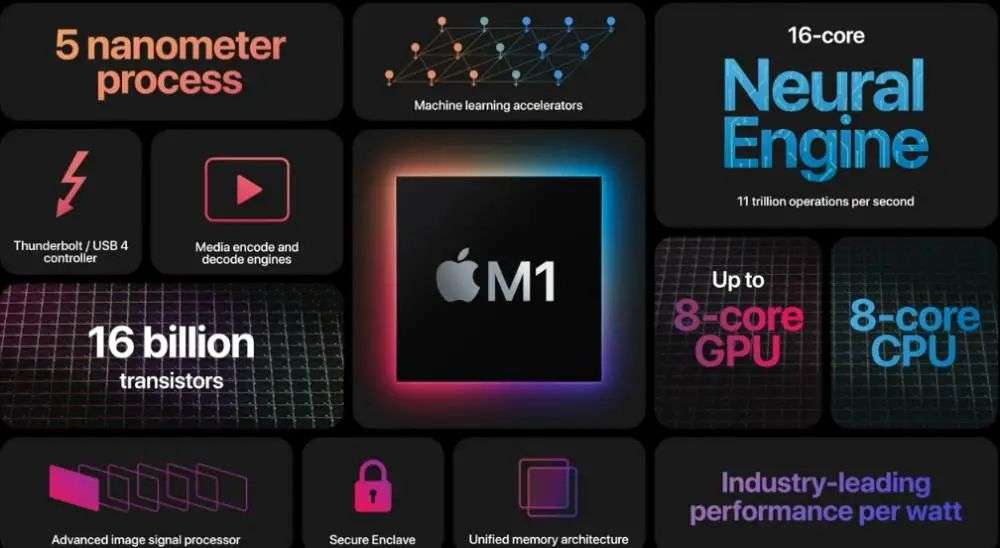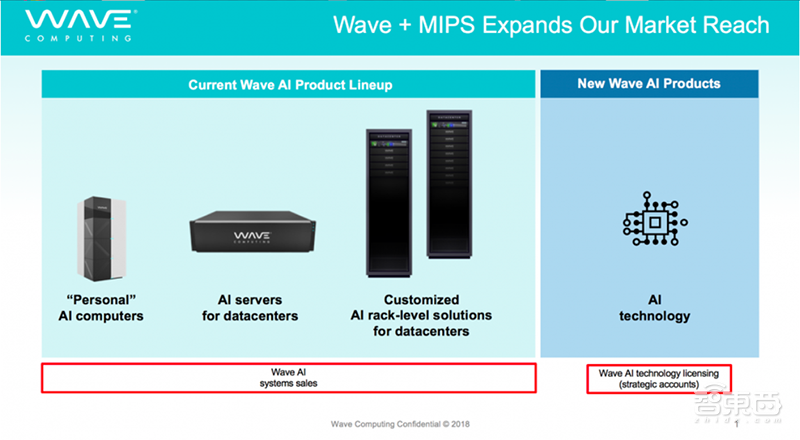Has the AI chip company caught up with the problems in 2020?
Editor’s note: This article is from the micro-channel public number “core stuff” (ID: aichip001), Author: Xinyuan, Editor: Desert shadow.
Too many gifts in 2020 are extraordinary.
The new crown epidemic has a weird start, and the trade conflict is still over. The hurricane stirred up by the US government is consuming the energy of people all over the world.
In the unpredictable current situation, the underlying infrastructure builders that accelerate the speed of artificial intelligence computing-AI chip companies-are undergoing new tests, some holding high, some moving forward low-key .
The alarm to improve the organization and management capabilities and anti-risk capabilities of the enterprise is sounded. Structural innovation and product performance are no longer the only indicators. It is the last word to bring value to the industry.
Cloud chip vendors hope to share the pie of the inevitable expansion of the data center market, and terminal chip vendors are exploring the most suitable shelter in fragmented application scenarios.
AI chips are still growing, and the shuffle period has not yet arrived.
At the end of 2020, we can give an overview of the AI chip field this year through ten key words.
01A100
Because of the epidemic, in May 2020, at the most important annual GTC conference of Nvidia, Nvidia founder and CEO Huang Renxun Lao Huang changed his kitchen into a new product launch conference and a “playing stalk” scene.
The kitchen itself seems to be quietly contrasting with the famous slogan of “knife precision”. When Lao Huang turned on the oven and brought out new products, he seemed to confirm that the GPU produced by the N-brand “Nuclear Bomb Factory” can indeed cook or even fry. kitchen.
A100, AI chip “Number One Player” Nvidia has nurtured a new flagship computing GPU for three years. Once it came out, it was like thunder. After the introduction of structured sparseness, the peak computing power of AI training reached 312TFLOPS, and the peak computing power of AI inference reached 1248TOPS. , Are 20 times higher than the previous generation Volta architecture GPU, achieving the biggest performance leap in the history of NVIDIA.
▲NVIDIA A100 GPU is 20 times faster than the previous generation V100
Nvidia DGX A100 system with 8 A100s, a single-node AI computing power reaches a record 5PFLOPS, a rack composed of 5 DGX A100s, computing power comparable to an AI data center. According to Lao Huang’s on-site accounting data, it is true that the famous slogan “the more you buy, the more you save”.
When a lot of manufacturers are still taking the Tesla V100, the previous generation flagship computing product of NVIDIA, as a benchmark for comparison, the NVIDIA A100 has entered a new era.
02 kirin9000
In contrast to Nvidia’s high spirits, Huawei has been shrouded in the shadow of international trade disputes for a long time and was forced to press the brake button for core manufacturing.
On May 15, 2020, the U.S. Department of Commerce announced to amend its export control regulations, requiring that as long as overseas companies using U.S.-related technology and software supply chips to Huawei and related companies, they must first obtain a license from the U.S. government.
On August 17, the United States again tightened the restrictions, announcing that 38 Huawei subsidiaries were included in the “Entity List” and requiring Huawei or its subsidiaries to obtain a license to purchase chips from third-party companies outside the United States.
▲ Screenshot of the official website of the US Department of Commerce
From then on, unless it obtains permission from the US government, Huawei cannot manufacture its own cores, nor can it purchase chips from third parties.
Looking back at 2018 and 2019, Huawei’s Kirin series chips are among the world’s strongest mobile phone AI chips, competing with Apple and Qualcomm.
However, if the U.S. government does not loosen its shackles on Huawei in the future, the Kirin 9000 chip on Huawei’s latest generation flagship mobile phone will become the last generation of Huawei HiSilicon’s Kirin chip, and the brilliant record of the Kirin chip series will be suspended .
What’s even more embarrassing is that, under the containment of US policy, Huawei HiSilicon, China’s largest chip design company, has no choice but to fall out of the TOP15 list of global semiconductor companies in 2020.
After this sudden “core robbery”, what is the future of Huawei HiSilicon? How does Huawei deal with adversity? These issues are the focus of the industry.
03 Apple M1
Counting from the first self-developed A4 mobile phone chip launched by Apple in 2010, this year Apple launched the first self-developed computer chip, exactly ten years apart.
Apple is not the first to manufacture cores, nor is it the first company to design Arm-based PC processors, but the M1 chip it has developed has still attracted worldwide attention.
In June 2020, Apple announced that it would launch a self-developed Mac chip to establish a common architecture among all Apple products. Five months later, Apple officially launched three new products using Mac computers, all equipped with Apple’s first self-developed Mac chip-M1.
M1 is an SoC with a 5nm process and 16 billion transistors. It has a built-in 16-core neural engine that can perform 110,000 operations per second and exhibits a very competitive energy efficiency ratio. With the support of the M1 chip, the new Macbook Pro has a battery life of up to 20 hours.
▲Apple M1 chip characteristics
Apple has proved with practical actions that the world’s top consumer electronics giants can not only make cores, but also have the hard core capabilities to design industry-leading chips.
The advent of the M1 chip not only further expands Apple’s self-developed chip layout, but also enables Apple to take over the important task of carrying the flag for the Arm processor and become the most promising main force to break through the x86 ecology of the PC industry.
04 5nm
From September to December 2020, Apple A14, Huawei Kirin 9000, Samsung Orion 1080, and Qualcomm Snapdragon 888, four major mobile phone AI chips, have been unveiled, forming the first lineup of 5nm mass production.
Since then, smart phones have officially entered the 5nm era.
▲Comparison of performance of 4 5nm mobile phone chips first released in 2020
Among them, the first two use TSMC’s 5nm process and have been launched with the sale of flagship mobile phones; the latter two are based on Samsung’s 5nm process, and the mobile phones supplied have not yet landed. The performance progress of these four AI chips is related to the architecture upgrade, and it is also inseparable from the iteration of the process technology.
Although TSMC is temporarily unable to support the production of its second-largest customer Huawei chips due to US restrictions, TSMC has no shortage of orders for replenishment due to a beautiful victory at the 7nm node.
After the 7nm commercial “catch up on the late episode”, Samsung is gaining momentum and intends to win more 5nm markets.
The 5nm market is in the ascendant, and 3nm trial production is also proceeding in an orderly manner. It is rumored that Apple has already scheduled the first batch of TSMC’s 3nm production capacity, which will be mass-produced in 2022.
05 Bankruptcy
Some companies are on the verge of breaking through, while others are on the brink of desperation.
In April 2020, foreign media broke the news that American AI chip star startup Wave Computing became the first AI chip company to file for bankruptcy protection during the epidemic.
This start-up company, founded in 2010, was once famous in the field of AI chips, focusing on accelerating the data center to the edge by implementing the software dynamically reconfigurable processor (CGRA) architecture of data-driven technology AI deep learning calculation.
In June 2018, Wave Computing acquired the veteran semiconductor IP company MIPS, planning to combine the data flow architecture with the MIPS embedded RISC multi-threaded CPU core and IP to provide power for the next generation of AI.
▲Wave Computing’s AI+MIPS business line
However, we have not yet seen Wave Computing launch new products that are more advantageous than other chips on the market. Instead, we are waiting for the bad news of applying for bankruptcy protection.




